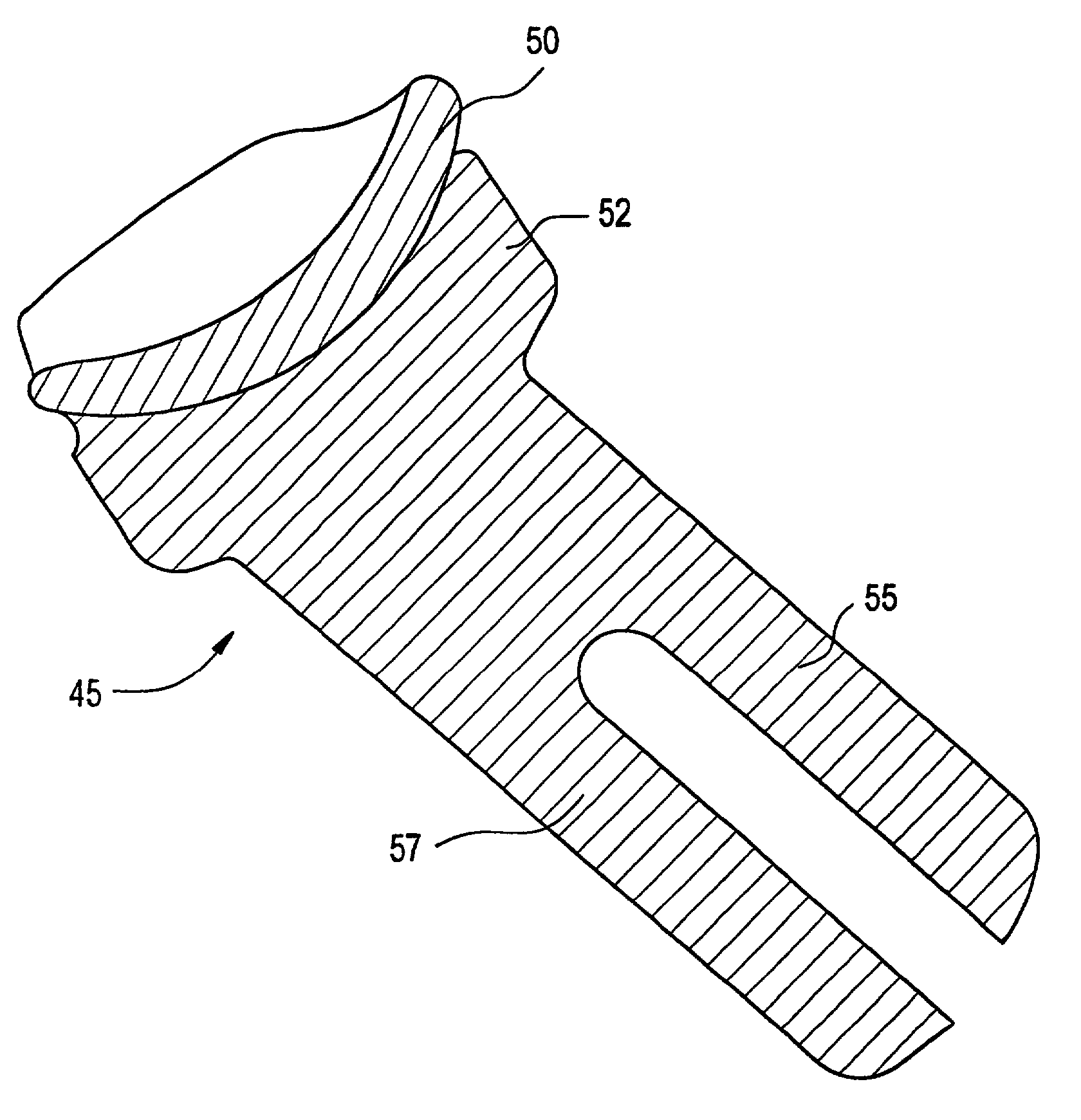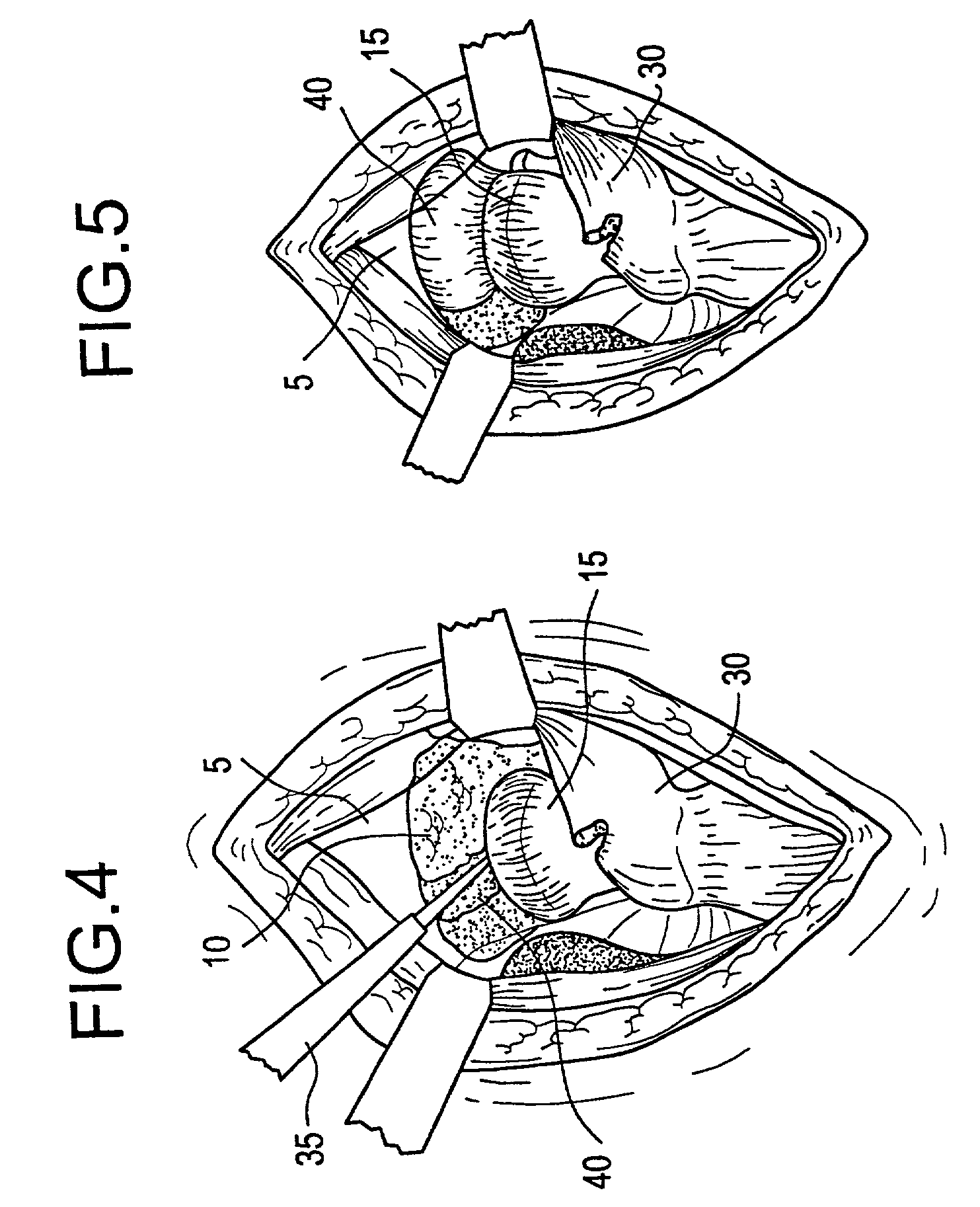Acetabulum spacing device
a technology for acetabulum and acetabulum, which is applied in the field of acetabulum spacing devices, can solve the problems of inability to support inability to achieve the effect of supporting the acetabulum in the usual manner, and significant number of total or subtotal hip joint implants have failed
- Summary
- Abstract
- Description
- Claims
- Application Information
AI Technical Summary
Benefits of technology
Problems solved by technology
Method used
Image
Examples
Embodiment Construction
[0025] In order for a bone joint, such as a hip, to function properly, it must be adequately supported from behind. Cancer and disease can cause necrosis or seriously damage the pelvis, rendering the natural support for the hip joint inadequate. Ideally, and in accordance with the present invention, the dead or diseased portion of the pelvis is removed without removing either all or part of the hip joint, and a support is placed behind the hip to lend adequate support to the joint. However, following removal of the dead or diseased portion of the pelvic bone, the typical procedure heretofore has been to remove at least the acetabulum, as well as a portion of the pelvis, and implant an artificial prosthesis. The present invention provides a time-saving and blood loss-reducing procedure for supporting the bone joint without requiring replacement of the joint, thus significantly reducing the patient's rehabilitation time.
[0026] While the following description is primarily directed to t...
PUM
 Login to View More
Login to View More Abstract
Description
Claims
Application Information
 Login to View More
Login to View More - R&D
- Intellectual Property
- Life Sciences
- Materials
- Tech Scout
- Unparalleled Data Quality
- Higher Quality Content
- 60% Fewer Hallucinations
Browse by: Latest US Patents, China's latest patents, Technical Efficacy Thesaurus, Application Domain, Technology Topic, Popular Technical Reports.
© 2025 PatSnap. All rights reserved.Legal|Privacy policy|Modern Slavery Act Transparency Statement|Sitemap|About US| Contact US: help@patsnap.com



